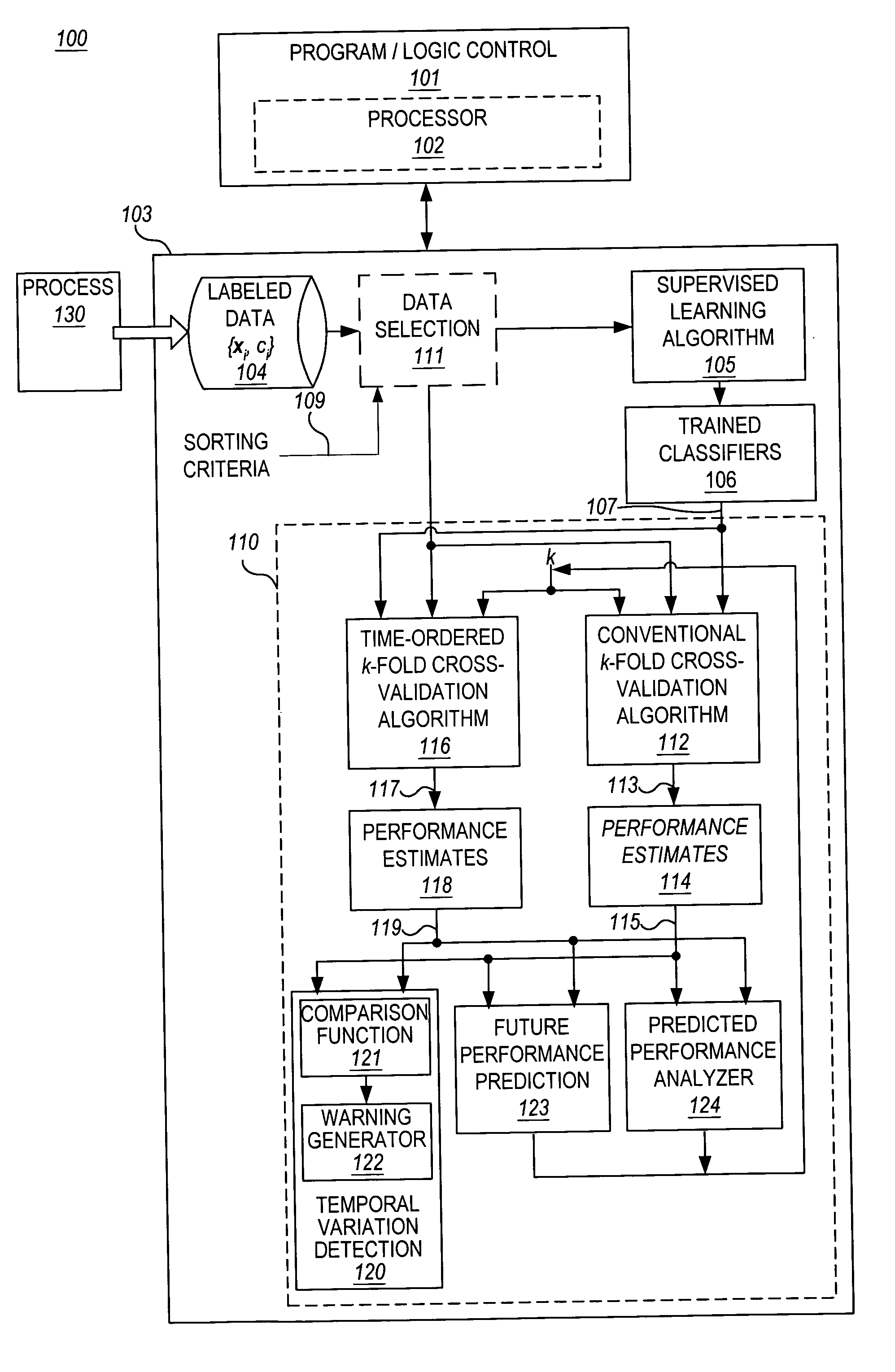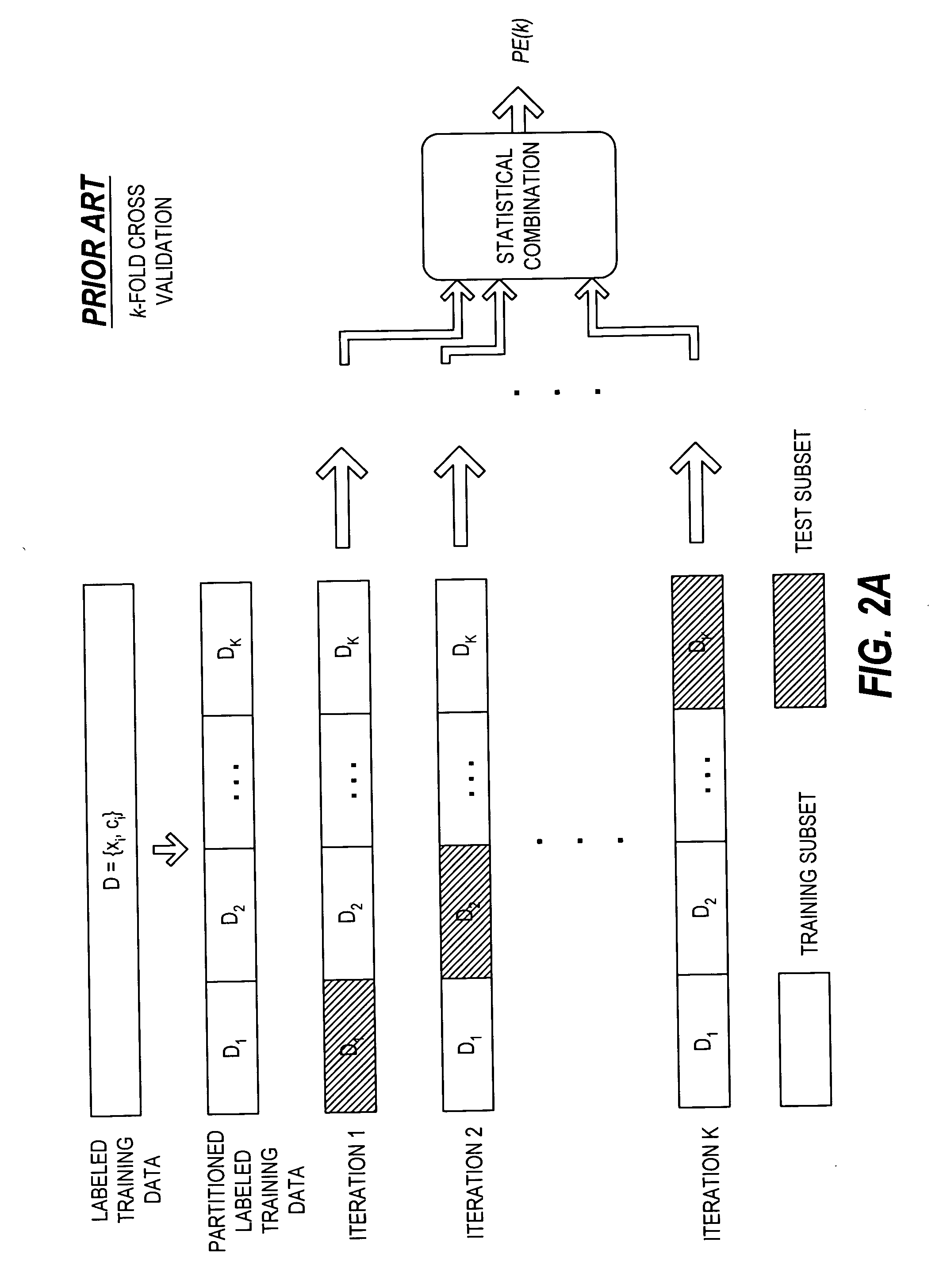Methods and apparatus for detecting temporal process variation and for managing and predicting performance of automatic classifiers
- Summary
- Abstract
- Description
- Claims
- Application Information
AI Technical Summary
Benefits of technology
Problems solved by technology
Method used
Image
Examples
Embodiment Construction
[0041] The present invention provides techniques for detecting the presence or possible presence of temporal variation in a process from indications in training data used to train a classifier by means of supervised learning. The present invention also provides techniques for predicting expected future performance of the classifier in the presence of temporal variation in the underlying process, and for exploring various options for optimizing use of additional labeled training data if and when collected. The invention employs a novel technique referred to herein as “time-ordered k-fold cross-validation”, and compares performance estimates obtained using conventional k-fold cross-validation with those obtained using time-ordered k-fold cross-validation to detect possible indications of temporal variation in the underlying process.
[0042] Time-ordered k-fold cross-validation, as represented in the diagram of FIGS. 5A and 5B, differs from conventional k-fold cross-validation in that t...
PUM
 Login to View More
Login to View More Abstract
Description
Claims
Application Information
 Login to View More
Login to View More - R&D
- Intellectual Property
- Life Sciences
- Materials
- Tech Scout
- Unparalleled Data Quality
- Higher Quality Content
- 60% Fewer Hallucinations
Browse by: Latest US Patents, China's latest patents, Technical Efficacy Thesaurus, Application Domain, Technology Topic, Popular Technical Reports.
© 2025 PatSnap. All rights reserved.Legal|Privacy policy|Modern Slavery Act Transparency Statement|Sitemap|About US| Contact US: help@patsnap.com



